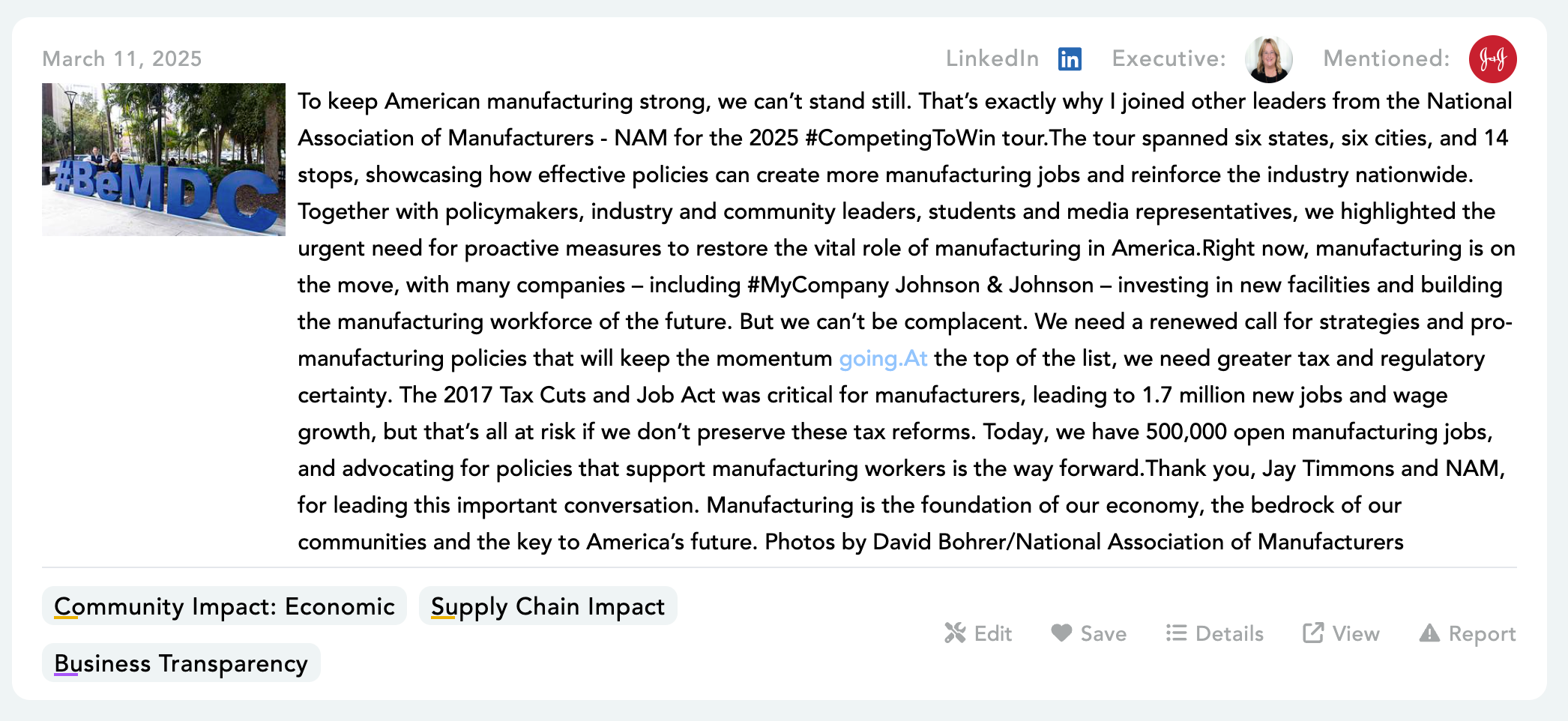
The New Frontline Risk: Supply Chain Impact in Health Care Exec Comms
From pandemic panic to tariff tensions, healthcare leaders are talking about supply chains more than ever. The question now is whether they're prepared not just to respond—but to adapt proactively for what’s next.
This renewed focus appears to reflect a mix of ongoing disruptions, regulatory pressures, and now heightened geopolitical tension—particularly around Donald Trump’s proposed tariffs on China and imported goods.
The chart below shows how discussion intensity has shifted over time:
Let’s break down what’s driving this trend—and why supply chain conversations aren’t going away anytime soon.
1. The COVID Wake-Up Call (2020–2021)
The initial surge in communications about Supply Chain Impact came at the onset of the COVID-19 pandemic. Hospitals and pharmaceutical companies faced a brutal reality: they couldn't source PPE, ventilators, or basic medical components fast enough.
Global lockdowns exposed just how fragile just-in-time supply chains really were. For many healthcare firms, this was the first time the supply chain entered the boardroom as a strategic issue.

2. Post-COVID Complacency (2021–2022)
Interestingly, the chart shows a lull in mentions after the initial wave. As emergency stockpiles grew and the worst of the pandemic subsided, many companies returned to business as usual. But the vulnerabilities didn’t go away—they just went quiet.
3. Re-Emergence of Risk Awareness (2023–2024)
Starting in 2023, mentions began to rise again. Several forces likely contributed:
- Ongoing Drug Shortages: From generic antibiotics to cancer drugs, the FDA reported consistent supply issues. Healthcare companies were under pressure to explain root causes and mitigation strategies.
- Reshoring and Diversification: Some firms began localizing supply chains or finding backup suppliers after seeing how China lockdowns or war in Ukraine could derail global logistics.
- Cybersecurity Threats: Supply chain attacks on software vendors and medical device manufacturers raised alarms in healthcare IT.

4. Geopolitics and the Tariff Threat (2024–2025)
The most recent and sharpest spike in the chart aligns with renewed political uncertainty—particularly the resurgence of Trump-era trade rhetoric and aggressive tariff proposals. Trump has recently floated imposing sweeping new tariffs, with figures ranging wildly—from general baseline increases to extreme cases over 100%. This unpredictability is creating significant anxiety across industries like medical devices, pharmaceuticals, and diagnostics, all of which depend heavily on global suppliers.
Healthcare executives are now proactively assessing how a potential wave of protectionism could disrupt operations, inflate costs, and pressure already fragile supply chains.

5. A New Strategic Priority
Healthcare companies no longer view the supply chain as a back-office function. It’s now tied to patient outcomes, stock performance, and regulatory compliance. The trend line you see isn’t just about logistics—it reflects a broader shift in corporate focus.
Expect this upward trend to continue as supply chain robustness becomes a permanent part of healthcare’s strategic playbook.
Track the state of supply chain and other critical corporate issues as they play out live, in real time, with Cometrics.